

EQUAL PAY LITIGATION: HOW WILL IT IMPACT EMPLOYERS IN 2023? Exclusive interview with Matthew J. Gagnon, Partner, Labor & Employment, Seyfarth Shaw MAY 2023 • Vol.10 • No.05 (ISSN 2564-2022) Themed Edition on Workplace Equity 18 13 30 34 An Inclusive Workplace Includes Neurodiversity: Empowering Employees To Reach Their Full Potential - Exclusive interview with Peter John Veysey, Of Counsel, Nelson Mullins Ensuring Non-Discrimination In Compensation: Dos And Don’ts - Exclusive interview with Kevin D. Johnson, Chair, Standing Committee on Technology, The Florida Bar Non-Compete Agreement Can Be An Important Tool To Protect A Company’s Business Interests - Exclusive interview with Quinn Oppenheim, Partner, Summit Law Group Pay Equity: There’s A Need For Continuous Improvement - Exclusive interview with Toyin Abioye, Head of HR, Immigration Advice Service


INDEX HR Legal & Compliance Excellence MAY 2023 Vol.10 No.05 (ISSN 2564-2022) Equal Pay Litigation: How Will It Impact Employers In 2023? - Exclusive interview with Matthew J. Gagnon, Partner, Labor & Employment, Seyfarth Shaw 08 Articles 32 Workplace Diversity: Remote Employees Is An Evolving Concern - Exclusive interview with Peter J. Glennon, Founder, Glennon Law Firm On the Cover 11 New York City AI Law: Trials, Tribulations, And Uncertainties What to expect of enforcement of the AI Law starting July 2023 - Miriam Wugmeister, Michael Schulman, and Sadé Tidwell, Attorneys, Morrison Foerster 17 The End Of The Covid-19 Health Emergencies What it means for plan sponsors - Jesse Hansen, Senior Employee Benefits Attorney, OneDigital 26 Dispute Resolution Clauses The most dangerous (and commonly ignored) clause in your employment agreements - Collin Williams, Founder and Chairman, New Era ADR Themed Edition on Workplace Equity
An Inclusive Workplace Includes Neurodiversity: Empowering Employees To Reach Their Full Potential

- Exclusive interview with Peter John Veysey, Of Counsel, Nelson Mullins
TOP PICKS 14 20
Ensuring Non-Discrimination In Compensation: Dos And Don’ts
- Exclusive interview with Kevin D. Johnson, Chair, Standing Committee on Technology, The Florida Bar
30
Non-Compete Agreement Can Be An Important Tool To Protect A Company’s Business Interests
- Exclusive interview with Quinn Oppenheim, Partner, Summit Law Group
34
Pay Equity: There’s A Need For Continuous Improvement


- Exclusive interview with Toyin Abioye, Head of HR, Immigration Advice Service

INDEX
How are our Legal & Compliance Products and Services helping to make you smarter?
Legal & Compliance Excellence - Monthly Interactive Learning Journal

This monthly interactive learning experience showcases solutions to deal with the latest legal and compliance issues facing corporations and legal departments.
Legal and Compliance Webcasts for Credit
HR.com offers various informative webcasts on a variety of topics including the latest HR compliance updates and legal considerations for employers and all HR professionals. Webcasts are available live online with a downloadable podcast and a copy of the slides (PDF) available before and after each webcast. Earn all of the required recertification credits for aPHR, PHR, SPHR, GPHR, and SHRM Certifications. HR.com’s one-hour webcasts, in every HR specialty including Legal and Compliance, are pre-approved for HRCI and SHRM credit (excluding Demo webcasts).
Legal and Compliance Community
Join almost more than 30,000 HR.com members with a similar interest and focus on compliance on legal regulations in HR. Share content and download research reports, blogs, and articles, network, and “follow” peers and have them “follow” you in a social network platform to communicate regularly and stay on top of the latest updates. This well established Legal and Compliance Community is an invaluable resource for any HR professional or manager.

SEP 2017 Vol. No. 09 Use these invaluable Legal & Compliance resources today! For more information phone: 1.877.472.6648 | email: sales@hr.com | www.hr.com
Editorial Purpose
Our mission is to promote personal and professional development based on constructive values, sound ethics, and timeless principles.
Excellence Publications
Debbie McGrath CEO, HR.com - Publisher
Sue Kelley Director (Product, Marketing, and Research)
Babitha Balakrishnan and Deepa Damodaran Excellence Publications Managers and Editors
HR Legal & Compliance Excellence Team
Deepa Damodaran, Editor
Chinnavel Design and Layout (Digital Magazine)
Vibha Bangalore Magazine (Online Version)
Submissions & Correspondence
Please send any correspondence, articles, letters to the editor, and requests to reprint, republish, or excerpt articles to ePubEditors@hr.com
For customer service, or information on products and services, call 1-877-472-6648
Debbie Mcgrath Publisher, HR.com
Deepa Damodaran Editor, HR Legal & Compliance Excellence


Workplace Equity: Promoting Fairness and Inclusion in Organizations
Intoday's business environment, it's more important than ever to create a work culture that values diversity and inclusion. Workplace equity ensures that all employees have access to the same opportunities and are treated fairly and without discrimination. As an HR professional, you play a vital role in promoting workplace equity within your organization.
In this edition of HR Legal & Compliance Excellence, we delve into the importance of workplace equity and explore the legal and compliance aspects related to it. We cover a range of topics, including equal pay, diversity and inclusion, anti-discrimination policies, and fair hiring practices.
We also provide practical tips for creating a more equitable workplace and examine the impact of workplace equity on employee morale, productivity, and retention.
Our cover story features an exclusive interview with Matthew J. Gagnon, Partner, Labor & Employment, Seyfarth Shaw, who discusses the new trends and developments in equal pay litigation and how they will impact organizations in 2023 and beyond.
We also feature interviews with prominent employment and litigation attorneys and HR leaders who share
HR Legal & Compliance
Excellence (ISSN 2564-2022)
is published monthly by HR.com Limited, 56 Malone Road, Jacksons Point, Ontario L0E 1L0
Internet Address: www.hr.com
their insights on various workplace equity-related topics and trends. In New York City AI Law: Trials, Tribulations, And Uncertainties, attorneys Miriam Wugmeister, Michael Schulman, and Sadé Tidwell, from Morrison Foerster discuss what to expect of its enforcement starting in July 2023.
We also touch upon how employers can build an inclusive workplace that empowers employees to reach their full potential, including accommodating attention-deficit/hyperactivity disorder (ADHD), in an interview with John Veysey, Of Counsel, Nelson Mullins, An Inclusive Workplace Includes Neurodiversity: Empowering Employees To Reach Their Full Potential.
That's not all! This edition of HR Legal & Compliance also covers other legal aspects and highlights that are essential for maintaining a healthy, safe, and secure workforce. We hope that the insights and information presented in this edition will help you create a more equitable workplace and foster a culture that values diversity and inclusion.
Happy Reading!
Disclaimer: The views, information, or opinions expressed in the Excellence ePublications are solely those of the authors and do not necessarily represent those of HR.com and its employees. Under no circumstances shall HR.com or its partners or affiliates be responsible or liable for any indirect or incidental damages arising out of these opinions and content. EDITOR’S NOTE
Subscribe now for $99 / year And get this magazine delivered to your inbox every month Become a Member Today to get it FREE! SIGN UP OR For Advertising Opportunities, email: sales@hr.com Copyright © 2023 HR.com. No part of this publication may be reproduced or transmitted in any form without written permission from the
must be
publisher. Quotations
credited.
Write to the Editor at ePubEditors@hr.com
In a world of unparalleled challenges (global pandemic, racial injustice, political rivalry, digital 4.0, emotional malaise), uncertainty reigns. Finding opportunity in this context requires harnessing uncertainty and harnessing starts with reliable, valid, timely, and useful information. The Excellence publications are a superb source of such information. The authors provide insights with impact that will guide thought and action.

Excellence publications are my ‘go-to’ resource for contemporary and actionable information to improve leadership, engagement, results, and retention. Each edition offers rich and diverse perspectives for improving the employee experience and the workplace in general.









I regularly read and contribute to Leadership Excellence and Talent Management Excellence. I use many of the articles I read to augment my own presentations and I often share the articles with my clients. They are always quick, right on target for the latest issues in my field, and appreciated by my clients. If you want to stay up to date on the latest HR trends, choose a few of the different issues from the Excellence series of publications.





 Dave Ulrich
Rensis Likert Professor, Ross School of Business, University of Michigan Partner, The RBL Group
Julie Winkle Giulioni Author, Virtual /Live Keynote Presenter, Inc.’s Top 100 Leadership Speakers
Dr. Beverly Kaye CEO, BevKaye&Co.
Dave Ulrich
Rensis Likert Professor, Ross School of Business, University of Michigan Partner, The RBL Group
Julie Winkle Giulioni Author, Virtual /Live Keynote Presenter, Inc.’s Top 100 Leadership Speakers
Dr. Beverly Kaye CEO, BevKaye&Co.
WHY EXCELLENCE PUBLICATIONS?
We’re eager to hear your feedback on our magazines. Let us know your thoughts at ePubEditors@hr.com

ePublication EditorialCalendar Checkoutthenewandupcoming themedHRtopicsinHRLegal& ComplianceExcellence Check ePublications Editorial Calendar Here. Would you like to submit an article? | Write to us at ePubEditors@hr.com Submission Guidelines 1 Contingent Work Jan 2023 2 Cybersecurity Feb 2023 3 Worker Immigration Mar 2023 4 Substance Abuse and Marijuana in the Workforce Apr 2023 5 Workplace Equity - Interview Special May 2023 6 Workplace Unions and HR Jun 2023
“Robust, contemporaneous documentation is often the most critical factor in determining the applicability of any affirmative defense. The catchall “factor other than sex” defense makes it legal to pay employees different amounts for any number of legitimate business reasons,” said Matthew J. Gagnon, Partner, Labor & Employment, Seyfarth Shaw

Matthew's practice focuses on helping employers navigate the evolving landscape of federal and state wage and hour and anti-discrimination laws, and defending employers against all manner of employment litigation and government-initiated investigations and litigation. In an exclusive interview with HR.com, he touches upon the new trends and developments in equal pay litigation, and how will they impact organizations in 2023 and beyond, among others.
Equal Pay Litigation: How Will It Impact Employers In 2023?
Excerpts from the interview:
Q:What are the new trends and developments in equal pay litigation?
Matthew: Probably the most important new trends are: (1) how courts interpret the changes recently made to the statelevel equal pay statutes; and (2) the reevaluation of critical issues in equal pay litigation generally.
First, since 2015, a number of states have amended their equal pay statutes in ways that deviate from federal law. Those changes could impact an employee’s prima facie case, and the employer’s affirmative defenses, in new and unique ways. We will not know exactly what those differences will be until we see how the courts interpret those new statutes.
The relatively surprising news is that, so far, courts do not seem to be interpreting those laws very differently from the federal law at all. Here is an important example: California and some other states (NY, IL, and others) have changed what employees must show to establish a prima facie case of pay discrimination.
HR Legal & Compliance Excellence presented by HR.com May 2023 8 Submit Your Articles
Straight Talk with HR.com COVER ARTICLE
Exclusive interview with Matthew J. Gagnon, Partner, Labor & Employment, Seyfarth Shaw
The federal Equal Pay Act prohibits paying members of the opposite sex different wages for “equal work on jobs the performance of which requires equal skill, effort, and responsibility.” Some new state laws changed this to “substantially similar work when viewed as a composite of skill, effort, and responsibility.” The question is whether less is required to meet the “substantially similar” requirement than is required to meet the “equal work” requirement.
Although there are other decisions to consider, the only case that has addressed the substance of this question directly has said “no.” That court reasoned that the “substantially similar” work requirement was meant to realign state law with the federal standard, not change it. This was surprising to many people, and many are watching closely to see if this trend holds true in the future.
Second, society’s increased attention to equal pay issues has resulted in more lawsuits that allege equal pay violations and are concerned chiefly with equal pay issues (as opposed to including that as just one issue among many). As a result, courts around the country are getting a chance to revisit these issues in
a substantive way, including issues that have become well-entrenched in the case law.
Courts around the country are beginning to reexamine bedrock principles, such as the exact nature of the burden-shifting mechanism applied to equal pay cases, or whether comparisons should be made on the basis of total compensation or wage rates. Another example that may be of particular importance to employers is what I call the “one comparator” rule.

Has an equal pay plaintiff met his/her/their burden to establish a prima facie case of pay discrimination if they point to just one comparator of the opposite sex which makes more than them? Or should the courts consider the salaries of other comparators, which might undercut an inference of discrimination, such as comparators of the opposite sex who make less than the plaintiff, or comparators of the same sex who make more?
This issue and others are being actively litigated in the courts. When considered against the backdrop of the changes that are being made to state-level stat-
HR Legal & Compliance Excellence presented by HR.com May 2023 9 Submit Your Articles
Straight Talk with HR.com
utes, it can seem like the entire field of equal pay litigation is undergoing massive change.
Q:How will these impact organizations in 2023 and beyond?
Matthew: Many of these changes will have a direct impact on employers, even if they are not actively litigating these issues in court. For example, many employers run statistical analyses of their workforce to spot any signs of possible discrimination. But in a jurisdiction that applies the one-comparator rule, those analyses may not be enough to identify potential sources of risk.
Unless an employer wants to pay all employees, who hold the same position exactly the same, the one comparator rule almost guarantees that a plaintiff would be able to establish a prima facie case of discrimination even if the statistics do not support an inference of discrimination.
Similarly, if the courts were to find that “similarly situated work” is a lower standard than “equal work” (which has not happened yet), that could directly impact how employers compare their workers for purposes of finding and remedying possible discrimination.
In other words, these issues will have a direct bearing on how employers seek out and try to mediate risk. Should they seek out instances of possible discrimination? Or should they be looking for and trying to minimize inequality?
The law is aimed at combatting discrimination. Under that framework, employers are free to pay employees different amounts, as long as those differences are not due to discrimination.
But some plaintiffs’ counsel seems to want it interpreted in a way that would outlaw inequality itself. As the courts resolve these issues, that could help employers decide how to set up and manage their compensation systems.
Q:Please share best practices for proactively managing equal pay risks.
Matthew: Robust, contemporaneous documentation is often the most critical factor in determining the applicability of any affirmative defense. The catchall “factor other than sex” defense makes it legal to pay employees different amounts for any number of legitimate business reasons.
Economic concerns, such as competitive pressures to attract top talent, as well as financial difficulties and corporate cutbacks, are often relied upon as reasons. But those reasons will not be compelling to a court unless they can be proven. Too often, the key decision makers have moved on from the company or have imperfect memories of events. Contemporaneous documentation of the reasons behind a particular pay decision can help ameliorate those problems.
Similarly, rigorous application and communication of work rules can make it easier to establish the reasons for pay disparities. If, for example, employers choose to justify a pay disparity based on a seniority or merit system, or on a system that bases pay on the quantity or quality of output, they must be careful that those systems are well documented and communicated to employees. A system that appears ad hoc or inconsistently applied risks being met with skepticism by a court.
Beyond that, performing regular pay equity audits, which take into account recent developments in the case law as outlined above, are a proactive measure employers can take to avoid large-scale equal pay litigation.
HR Legal & Compliance Excellence presented by HR.com May 2023 10 Submit Your Articles
Straight Talk with HR.com
Would you like to comment?
New York City AI Law: Trials, Tribulations, And Uncertainties
What to expect of enforcement of the AI Law starting July 2023
By Miriam Wugmeister, Michael Schulman, and Sadé Tidwell, Morrison Foerster
New York City (NYC) is the first U.S. jurisdiction to pass an expansive law regulating the use of artificial intelligence (AI) in hiring. Local Law 144 of 2021 (LL144) prohibits employers and employment agencies from using an automated employment decision tool (AEDT) to make employment decisions for job candidates in New York City, unless:
● the tool has been subject to a “bias audit” within one year of using the tool;
● information about the bias audit is made publicly available; and
● certain notices are provided to employees or job candidates.
LL144 is on many stakeholders’ radars, as the law carries some potentially hefty civil penalties, including up to $500 for the first violation and each additional violation occurring on the same day, and a penalty between $500 and $1,500 for each subsequent violation. Each day the AEDT is used in violation of the law constitutes a separate violation.
Due to the outstanding open questions and practical concerns regarding the law’s requirements, the New York City Department of Consumer and Worker Protection (DCWP) postponed enforcing the law until July 2023.
Articulated Justifications for NYC’s AI Law’s Enactment
According to the NYC City Council, AEDT and other AI tools have unintended consequences. The City Council submits that while they are useful for efficiency, cost-saving measures, and, in some cases, to reduce bias, AEDT and AI may be susceptible to biased decision-making. AEDT and AI tools make decisions over time based on training data.
Legislators and advocates are concerned that the data can replicate racial and other biases in the hiring process, as it can incorporate biased human decisions and inputs, perpetuating or reflecting historical or social inequities, even if sensitive variables, such as gender, race, or sexual orientation, are removed.
These concerns prompted NYC to pass LL144, aiming to create more transparency regarding the use of these tools by employers and to avoid discriminatory outcomes.
LL144’s Problematic 10-Day Notice Requirements
LL144 requires any employer using an AEDT to screen individuals for a position to notify everyone who resides in NYC, at least 10 days prior to using the tool: (1) that AEDT will be used in connection with the assessment or evaluation; and (2) specify
HR Legal & Compliance Excellence presented by HR.com May 2023 11 Submit Your Articles
the job qualifications and characteristics that such AEDT will use in the assessment. The purpose of the advance notice requirement is to permit the individual to request an alternative selection process or accommodation.
The law’s notice requirements are problematic for three main reasons. First, the obvious unintended consequence of the 10-day notice requirement is that NYC residents applying for positions will effectively be considered for employment or promotion 10 days later than candidates from other jurisdictions, including Long Island, New Jersey, Connecticut, or outside the tristate area. Employers relying on AEDTs may decide to reject candidates who reside in NYC outright to avoid needing to comply with LL144’s notice requirements.
Second, the notice requirement will result in hiring delays in situations where vital workers are needed quickly, including hospital staff, security and public safety occupations, and other frontline workers. These delays may adversely impact NYC residents, who benefit from these services. Employers may rush to fill urgent vacancies with employees residing outside of NYC.
Finally, it may be impossible for an employer to notify individuals of “the job qualifications and characteristics” the AEDT is using in its assessment 10 days prior to its use. AEDT tools are intended to auton-
omously learn to complete task without human involvement and modify relevant criteria based on constant inputs and mined data.
DCWP’s Implementation Rules
After receiving feedback from the business community and other stakeholders, DCWP recently released proposed implementation rules that attempt to mitigate some of the unintended consequences of LL144’s advance notice requirements. Specifically, the proposed rules allow employers to satisfy the notice requirement by:
● providing notice on the employer’s website in a clear and conspicuous manner at least 10 business days prior to the use of an AEDT;
● providing notice in a job posting at least 10 business days prior to the use of an AEDT; and
● providing notice to candidates for employment via U.S. mail or email at least 10 business days prior to the use of an AEDT.
These rules, which appear to approve of the use of boilerplate notices on websites, in privacy terms, or job postings, address the first and second problems with the statutory notice. On their face, the rules would allow employers to consider NYC residents for employment or promotion at the same time as candidates from other jurisdictions.
The rules would also allow employers to quickly fill urgent vacancies. However, the rules do not address the third concern that it is impractical for an employer to notify individuals of the “job qualifications and characteristics” the AEDT is using in its assessment before the tool is used or in a boilerplate notice.

AI generally entails computers that perform actions involving forms of human decision-making, intelligence, cognition, and intellect. Many of these computer programs use machine learning (ML) algorithms that attempt to replicate the human learning process. It is difficult to pinpoint exactly how these ML algorithms interpret certain data variables to reach conclusions at any given point.
ML algorithms are essentially computer programs that adapt and acquire skills through progressive
HR Legal & Compliance Excellence presented by HR.com May 2023 12 Submit Your Articles
New York City AI Law: Trials, Tribulations, And Uncertainties
learning by finding patterns, structure, and regularities in datasets. The algorithms learn by assessing the variables in these datasets, and the more data assessed, the more the algorithm improves the accuracy of its conclusions.
The job qualifications and characteristics (i.e., data variables) an employer’s AEDT will use in its assessment are often moving targets. While it is possible for employers to notify candidates of the specific qualifications and characteristics utilized by the AEDT after its use and to conduct bias audits to confirm AEDT did not unfairly disadvantage particular groups, requiring employers to provide a detailed preemptive notice with this level of information is impossible. Further, it undermines the efforts of the DCWP to correct the unintended adverse consequences of the advance notice requirement by permitting more generalized website and job posting notices.
The NYC legislators should consider amending the notice requirement by only requiring either the inclusion of (1) the employer’s input regarding which job qualification and characteristic data variables should be assessed for a particular job by the AEDT; or (2) a
generalized statement that AEDT will be used in connection with the assessment or evaluation and allow employees to request the specific job qualifications and characteristics that such AEDT actually used in the assessment after a selection is made.
These alternatives align with the intended purpose of the notice requirement of allowing individuals to determine whether they need to request an alternative selection process or accommodation, while alleviating some of the practical challenges employers would face attempting to comply with the new law.
What Does This Mean for Employers?
The business community has continued to press NYC legislators to amend LL144 to address several issues with the law, and the notice requirement’s content should be on the shortlist. Meanwhile, LL144 is effective and scheduled to be enforced beginning July 2023. Employers should begin taking steps to comply based on the current guidance. Employers should prioritize conducting an “independent bias audit,” and publish the results with the assistance of legal counsel or knowledgeable consultants.
Miriam Wugmeister is is co-chair of Morrison Foerster’s preeminent Global Privacy and Data Security Group, based in the New York office. She is regularly called upon by some of the world’s largest and most complex multinational organizations to confront their most difficult privacy and data security challenges.

Michael Schulman is a Partner in the Washington, D.C. office of Morrison Foerster’s Global Employment and Labor Group. He has extensive employment and labor law experience, regularly advising clients in connection with workforce-related counseling, investigation, transactional, and litigation matters.

Would you like to comment?
Sade Tidwell is an Associate in the Employment + Labor Group in Morrison Foerster’s Washington, D.C. office. Sadé’s practice includes a broad range of employment counseling and litigation, with a focus on pay equity, OFCCP and affirmative action compliance, and diversity and inclusion counseling.

HR Legal & Compliance Excellence presented by HR.com May 2023 13 Submit Your Articles
New York City AI Law: Trials, Tribulations, And Uncertainties
“Contextualizing neurodivergence in the same light as other protected conditions affecting a worker’s ability to perform their job is a good place to start. Understanding how to manage that as it relates to your organization goes hand-in-hand with perhaps the biggest challenge – which is spotting when an employee may need accommodation,” said Peter John Veysey, Of Counsel, Nelson Mullins.
In an exclusive interview with HR.com, Peter John shares his insights on how employers can build an inclusive workplace, their obligations to consider and accommodate attention-deficit/hyperactivity disorder (ADHD) in workplaces, and more.
An Inclusive Workplace Includes Neurodiversity: Empowering Employees To Reach Their Full Potential
Excerpts from the interview:
Q:Can you tell us more about the recent shortage of medications to treat ADHD and how it relates to employers’ workplace equity goals and obligations?
Peter John: At a high level, supplies remain unable to meet skyrocketing demand. In combination with that, concurrent manufacturing delays due to issues like labor shortages and supply chain problems and a complicated regulatory environment for controlled substances like Adderall created the supply shortage that has persisted since last year.

Regardless of the root causes, the immediate result is that people who rely on these medications to treat issues like ADHD are unable to refill their prescriptions. Because these medications are not the type people take on an as-needed basis, and because they are controlled substances, for most people that means once they are out, they are out.
Given the nature of the diagnosis, this can severely affect the work performance of impacted individuals – which is obviously a key reason why many rely on these medications in the first
HR Legal & Compliance Excellence presented by HR.com May 2023 14 Submit Your Articles
Straight Talk with HR.com
Exclusive interview with Peter John Veysey, Of Counsel, Nelson Mullins
TOP PICK
place. This creates a difficult situation for workers and employers. Workers with ADHD are protected by laws like the Americans with Disabilities Act, among others, but like other protected mental health conditions, awareness and understanding of how to address these issues are still developing.
A few equity issues arise here. First, employers should understand how to eliminate the stigma around diagnoses like ADHD, conform their policies to ensure they can address and accommodate workers’ related challenges and build in the cultural and structural components necessary to meet those goals.
In no uncertain terms, the medication shortage is a crisis for affected individuals, which accelerates employers’ obligations to examine whether their workplaces and policies can adequately address neurodiversity issues.
More specifically, this issue extends beyond an organization’s mental health literacy and overlaps with other equity considerations. A lot of data is available about differential diagnoses, availability of medical advice, access to prescriptions, and access to information depending on factors like gender, ethnicity, socioeconomic environment, or cultural background.
For example, data reveals a major disparity in how and when different genders are diagnosed with ADHD. The same disparities are more expansive for historically disadvantaged populations, particularly for access to testing, mental health providers and/or pharmacy resources. Substance abuse and addiction conditions are also protected categories in the workplace under various laws, where we separately see overlap with conditions like depression and ADHD.
This opens another dimension to the landscape just described. We can extrapolate how the potentially severe effects of the medication shortage might affect individual workers, and how workers’ circumstances, environments, and backgrounds may exacerbate these issues. Any employer taking a serious look at improving equity and inclusion goals should not ignore this topic.
Unfortunately, this is also one more area that only further exposes equity issues and structural inequalities where the solutions are less clear. For example, ADHD, like other mental health/behavioral/neurodivergence conditions, is underdiagnosed among underserved, disadvantaged, or marginalized populations. Testing is rigorous, mental health resources are sometimes expensive or unavailable and the support networks that help with awareness – school counselors, therapy and wellness programs – can be harder to access for some people.
Similarly, other areas like gender expectations likely stratified diagnoses between men and women, where men are often diagnosed before adulthood, when family and support resources may be more robust to allow for testing and assessment, while women are more likely to be diagnosed as adults. As a result, it may be that two employees struggle with ADHD at work, but employee A was formally diagnosed, receives medication and counseling, and can certify that they need protection, and reasonable accommodation.
Meanwhile, employee B was unable to access these resources and cannot formally document what is otherwise a protected disability if their work suffers. “I can’t get my medication, so I have to take leave from work – here’s a doctor’s note,” is less murky than, “I struggle to regulate my focus or stay organized and I need the company’s help.” In other words, the laws are helpful, but there is still a long way to go and equity considerations play a major role.
If there is an opportunity here, the medication shortage on some level provides a bright line moment for organizations to consider how to accommodate conditions like ADHD and how to encourage, empower or even equip workers to take a hard look at their own mental health in ways that were possibly unavailable to them at other points in their life.
This can be meaningful for a variety of reasons, not least of which is knowing how to make or ask for certain assistance from the employer to work around performance issues before it is too late. The business rationale here is, of course, that the moment provides organizations with a chance to consider if and how they are maximizing their workers’ potential.
HR Legal & Compliance Excellence presented by HR.com May 2023 15 Submit Your Articles Straight Talk with HR.com
Obviously, it is not a tidy issue, and employers should assess whether they have the management infrastructure or training in place to both accommodate affected workers as much as possible and also avoid any risk under applicable labor laws. These adjustments might require employers to consider the immediate circumstances caused by the recent and ongoing shortage.
health literacy and awareness are helpful ways to build an inclusive workplace culture that reduces the risk of some future legal problems.
Q:
How have adult ADHD diagnoses changed since 2020, and what factors have contributed to this increase?
Peter John: Adult ADHD diagnoses have seen double-digit increases since 2020, and observers attribute various causes to this. The general consensus seems to be a confluence of increased awareness around adult ADHD, pandemic-related challenges for workers, the proliferation of novel care formats like telehealth, and what some identify as potential over-diagnoses.
Naturally, this led to more prescriptions for medications like Adderall, which increased by more than 10% between 2020 and 2021.
Q:What obligations do employers have under federal laws like the ADA and related state laws to consider and accommodate issues like ADHD, anxiety, or depression in the workplace?
Peter John: The ADA mandates disability protections for employees with more than 15 people. These include protection from discrimination and harassment, confidentiality and the obligation to provide reasonable accommodations. Many state and local laws expand these protections, including for smaller employers.
The ADA, which we can consider a reliable baseline here, expands disability protections to mental health conditions like ADHD, depression and anxiety. An employer’s first obligation is to understand these laws.
An employer’s second obligation is to know how to prevent discrimination or harassment relating to issues like ADHD, anxiety, or depression. That step may be easier said than done. Proactively, it starts with workplace culture. Improving organizational mental
This involves eliminating common stigmas around issues like ADHD – “It’s an excuse,” “It’s another word for laziness,” “Workers shouldn’t need medication to do the job,” – and presenting this in a way that is consistent with an organization’s performance metrics, culture or business goals. An inclusive workplace includes neurodiversity, and that is the best way we can empower all employees to reach their full potential.
Contextualizing neurodivergence in the same light as other protected conditions affecting a worker’s ability to perform their job is a good place to start. Understanding how to manage that as it relates to your organization goes hand-in-hand with perhaps the biggest challenge – which is spotting when an employee may need accommodation.
Due to the aforementioned stigmas, workers might be apprehensive about seeking accommodations or describing their challenges. If an employee says, “I need my medication to work and I can’t access my medication,” this is a clear warning sign that they may need an accommodation. This triggers the employer’s legal obligations, even if the employee is not making a direct request.
Sometimes those warning signs are less direct. As such, it is crucial for employers to maintain an information/human resources (HR) architecture that helps managers spot certain issues and provides employees with an understanding of how and where they can address any personal struggles. This will go a long way in helping employers fulfill their obligations and also demonstrate that they understand their obligations, particularly in the event there is a later dispute or investigation.
Would you like to comment?
HR Legal & Compliance Excellence presented by HR.com May 2023 16 Submit Your Articles
Straight Talk with HR.com
The End Of The Covid-19 Health Emergencies
What it means for plan sponsors
By Jesse Hansen, OneDigital
Legislationsigned by President Biden on April 10 ends the Covid-19 National Emergency immediately, one month earlier than anticipated. The end of the national emergency ends many temporary rules and compliance responsibilities for plan sponsors, insurance carriers, and others that were put into place at the beginning of the Covid-19 pandemic.
The Department of Labor (DOL) has informally announced that despite the statutory end of the national emergency being 30 days earlier than expected, to avoid potential confusion and changes to administrative processes already in progress, the deadline of July 10, 2023, will remain the relevant date for the end of the Covid outbreak period.
FAQs (frequently asked questions) released on March 29, 2023, by the DOL, Treasury, and the U.S. Department of Health and Human Services (HHS) provided the outbreak period generally continues until 60 days after the announced end of the
Covid National Emergency or another date announced by the DOL, treasury department, and the Internal Revenue Service (IRS).
The legislation does not impact the Public Health Emergency, which is set to end on May 11, 2023. The end of the Public Health Emergency will end Covid relief legislation that required group health plans and insurers to cover Covid-19 diagnostic testing without cost-sharing, prior authorization, or other medical management requirements during the public health emergency. Non-grandfathered plans were also required to cover Covid-19 vaccines without cost-sharing and on an expedited basis.
End of the Covid Outbreak Period
One of the biggest changes for health plan sponsors will be the end of the Covid Outbreak Period. During the outbreak period, deadlines for the Health Insurance Portability and Accountability Act
(HIPAA) Special Enrollment, the Consolidated Omnibus Budget Reconciliation Act (COBRA) notice and premium payments, and claims and appeals filing were extended. These deadline extensions end either at the end of the outbreak period or after an individual has been eligible for a deadline extension for a year, whichever is earlier.
Medicaid Eligibility
In response to the pandemic, the Public Health Emergency required states to keep people enrolled in Medicaid in order to continue receiving a temporary increase in the federal share of Medicaid costs. However, the Consolidated Appropriations Act (CAA) of 2023 unlinked the continuous enrollment to the end of the Public Health Emergency but rather ended on March 31, 2023.
The CAA-23 also required a gradual phased down of increased federal funding beginning April 1, 2023. Beginning April 1, 2023, states will be able to terminate Medicaid enrollment for individuals no longer eligible.
HR Legal & Compliance Excellence presented by HR.com May 2023 17 Submit Your Articles
Many of these individuals, who are eligible for an employer-sponsored health plan, may be entitled to a HIPAA Special Enrollment right due to loss of Medicaid eligibility. Employers should be prepared for possible new mid-year enrollees.
Standalone Telehealth Benefits
During the Public Health Emergency, applicable large employers (ALEs) under the Affordable Care Act (ACA) were allowed to offer standalone telehealth and remote care services to employees who were not eligible under a group health plan offered by the employer. When the Public Health Emergency ends, these plans will once again need to revisit their telehealth eligibility provisions
to avoid violating ACA’s market reform provisions.
Note this is different than the interaction of telehealth coverage and health savings accounts (HSA) eligibility. Under the CAA-23, a two-year extension was provided to allow an otherwise eligible HSA individual to remain eligible even if coverage by a telehealth program that provided coverage before the individual reached their deductible.
The end of the national emergency brings yet another change to the administrative procedures adopted during the pandemic. Plan sponsors should begin to prepare for the end of this emergency now by having conversations with their internal

team, health insurance carriers, third party administrators (TPAs), and trusted advisors.
Jesse Hansen is a Senior Employee Benefits Attorney at OneDigital. He collaborates primarily with benefits advisors and employers in the western half of the U.S. to educate and develop practical compliance solutions for employee-sponsored benefit issues. Would you like to comment?

HR Legal & Compliance Excellence presented by HR.com May 2023 18 Submit Your Articles The End Of The Covid-19 Health Emergencies
Thank you for partnering with us!
Circa provides OFCCP compliance management and recruiting technology solutions to deliver qualified candidates on a level, equitable playing field for organizations. LEARN MORE

Aimed Alliance is a non-profit organization that seeks to protect and enhance the rights of health care consumers and providers.

EVERFI’s workplace training offerings empower employees to transform their organizations' workplace cultures with impactful, change-driven courses that go beyond compliance. LEARN MORE
Paycom (NYSE:PAYC) offers cloud-based human capital management software to help businesses streamline employment processes, from recruitment to retirement. With a robust suite of products including payroll, time and labor management.

LEARN MORE
Designing better ways to work by providing cutting-edge products and exceptional experiences within HR, Talent, Time Management, Benefits and Payroll.
LEARN MORE

THANK YOU
ADVERTISE WITH US
LEARN MORE
“Smart decisions about transparency usually involve well-designed communication to employees that sets out the goals of the employer’s compensation philosophy and is then followed by the sharing of enough information to help the employees gain confidence that the employer’s decisions match its stated philosophy, remain internally consistent, and make sense in light of external marketplace factors,” said Kevin D. Johnson, Chair, Standing Committee on Technology, The Florida Bar
Kevin is a founding shareholder of Johnson Jackson PLLC. and is board certified in Labor and Employment Law by The Florida Bar. In an exclusive interview with HR.com, Kevin shares his insights on how employers can ensure their compensation practices are fair and equitable, the common misconceptions that employers have about pay equity, and how can they be addressed, among others.
Ensuring NonDiscrimination In Compensation: Dos And Don’ts
Excerpts from the interview:
Q:What steps can employers take to ensure that their compensation practices are fair and equitable, and what are some common pitfalls to avoid?
Kevin: Employers need to adopt and follow policies designed to ensure compliance with the non-discrimination requirements of Title VII and the Equal Pay Act. Best practices for ensuring non-discrimination in compensation usually include the following:

● Establishing a band that compensation for a given position should generally fall within.
● Deciding what factors matter in setting compensation within that band (education, experience, special training, additional responsibilities, etc).
● Requiring justifications for any compensation decisions that fall outside the band.
● When a compensation decision is being made, review how the proposed compensation level compares to that of similarly-situated comparators
HR Legal & Compliance Excellence presented by HR.com May 2023 20 Submit Your Articles
Straight Talk with HR.com
TOP PICK
Exclusive interview with Kevin D. Johnson, Chair, Standing Committee on Technology, The Florida Bar
● Conducting pay equity analyses from time to time.
Common pitfalls include:
● Paying a male employee more than a female employee because the male employee is a “head of household.”

● Failing to account for the effect of salary compression, especially when paying “market rates” for new hires results in an employee with less experience making more money than an experienced incumbent employee of the opposite gender.
● Not being able to identify the business justification for a given compensation decision, especially when the manager who made the compensation decision is no longer around to explain it.
Q:How can an organization conduct a pay equity analysis, and what are some best practices for doing so?
Kevin: A true pay equity analysis usually involves tabulating data about the compensation paid to various employees, cross-referencing that data with information about the demographics, duties, and
performance of the employees, and then consulting with an expert who can review the data and make statistical conclusions about what that data shows.
The expert can identify which specific positions show statistically significant disparities. The employer can then follow up with supervisors to review whether those disparities are justified or should be eliminated.
An employer should typically consult with counsel before beginning a pay equity analysis, especially if it would like to keep the results confidential and privileged. There are specific ways to design a pay equity analysis that will allow an employer to obtain data that is useful to the employer while minimizing the risk of creating a blueprint for an employee to follow when bringing a compensation lawsuit.
Q:Can you speak to the role of job evaluations and market analysis in ensuring pay equity, and how can employers ensure that these processes are unbiased?
Kevin: The federal Equal Pay Act requires a showing that the employees being compared to each other are performing “equal” work, not just “comparable” work. Thus, federal law generally does not require employers to ensure that jobs with different job
HR Legal & Compliance Excellence presented by HR.com May 2023 21 Submit Your Articles
Straight Talk with HR.com
functions are paid the same, even if it can be argued that the level of skill or effort needed to perform them is comparable.
Nevertheless, an employer may still find it helpful to evaluate the content of a given job to determine whether the skill, effort, and responsibility needed to perform it are similar to that required to perform another job with a slightly different title or area of responsibility.
If the jobs under comparison have a substantial identity of job functions, the EPA will likely apply. Even if not, the employer may want to ensure that similar compensation bands are used for jobs that are roughly similar. By doing so, the employer builds trust in its compensation philosophy and reduces the chance of perceived inequity leading to a charge of discrimination.
Likewise, conducting a market analysis may be helpful in establishing a benchmark compensation level for a particular job. Not only does knowledge of the market help an employer compete for talent in the workplace, it may also help an employer determine whether hiring new employees at competitive salaries will create a risk of causing disparities with existing employees who are being paid at below-market levels.
Q:What should employers do if they identify pay disparities within their organization, and what legal risks could they face if they fail to take action?
Kevin: Generally speaking, if employers find legally significant disparities in pay, they should raise the lower-paid employee’s compensation to a level that is sufficient to eliminate the disparity. Reducing the higher-paid employee’s compensation will not serve as a defense under the Equal Pay Act. It is also likely to create morale problems.

When an employer violates the Equal Pay Act, it becomes liable to the underpaid employee for up to two years of back wages, plus an equal amount as liquidated damages. If the employer is found to have committed a willful violation, the statute of limitations expands to three years.
If a pay disparity is the result of intentional sex discrimination in violation of Title VII, the employer may also be liable for compensatory and punitive damages.
Q:Can
you discuss any recent developments or trends in pay equity law, and how might they impact employers in the future?
Kevin: Employers continue to look for ways to eliminate the “pay gap” between male and female employees. Employers are also trying to find ways to deal with pay compression created by both statutory minimum wage increases and inflationary market conditions.
Q:How
can employers ensure that their pay practices are transparent and understandable to employees?
Kevin: Employees want to know that the employer is attempting to make decisions about compensation on what they perceive to be a fair basis. When employers can successfully convey to employees
HR Legal & Compliance Excellence presented by HR.com May 2023 22 Submit Your Articles
Straight Talk with HR.com
that their compensation decisions are made on a reasonable basis, with proper attention paid to both internal and external factors that are relevant, the employer is likely to improve its employee retention rates.
Employers must find the correct balance between sharing “too much” and “not enough” information. Sharing more information about individual employees’ compensation levels is not always the right choice – the employees must have enough of an understanding of the employer’s business and its philosophy to understand why compensation decisions make sense.
Smart decisions about transparency usually involve well-designed communication to employees that sets out the goals of the employer’s compensation philosophy and is then followed by the sharing of enough information to help the employees gain confidence that the employer’s decisions match its stated philosophy, remain internally consistent, and make sense in light of external marketplace factors.
Q:What are some common misconceptions that employers have about pay equity, and how can they be addressed?
Kevin: Employers may think that pay-equity analysis is a relatively simple project that they can conduct on their own without consulting experienced advisers. When done improperly, pay equity analysis may provide statistically flawed and unhelpful results, may result in unnecessary compensation changes, and may create litigation risks.
Q:How can unions and collective bargaining agreements impact pay equity, and what should employers be aware of in these situations?
Kevin: An employer’s ability to alter compensation may be restricted by the provisions of a seniority system or other rules about deciding compensation that has been collectively bargained with s union. If so, the employer will likely have to bargain with the union before it makes any changes to the process for determining compensation.
The collective-bargaining agreement between the parties may also provide for a grievance process that can be used by employees to address concerns about compensation. An employer that deals with such grievances must be familiar with the grievance process and understand how individual grievances may provide signs of systemic employee concerns about compensation.
Q:Finally, what advice would you give to employers who want to ensure that their compensation practices are fair and equitable, and how can they stay up-todate on changes in pay equity law?
Kevin:
● Develop a comprehensive compensation philosophy that treats employees fairly and allows you to gain their trust.
● Do not reject requests for raises out of hand – consider them carefully and try to figure out whether they reflect an accurate assessment of the market by the employee. If so, learn from them.
● Make sure to seek out current updates about new laws that may affect employee compensation.
● Retain an experienced employment lawyer whom you can consult whenever potential litigation risks arise.
● Use that lawyer to help you manage a pay-equity analysis at reasonable intervals.
Would you like to comment?
HR Legal & Compliance Excellence presented by HR.com May 2023 23 Submit Your Articles
Straight Talk with HR.com
HRCI® & SHRM® CERTIFICATION PREP COURSES
GROUP RATES AVAILABLE
For HR Professionals
Show that management values the importance of the HR function, and has a commitment to development and improvement of HR staff.
Ensure that each person in your HR department has a standard and consistent understanding of policies, procedures, and regulations.
Place your HR team in a certification program as a rewarding team building achievement.
For Your Organization
Certified HR professionals help companies avoid risk by understanding compliance, laws, and regulations to properly manage your workforce.
HR Professionals lead employee engagement and development programs saving the company money through lower turnover and greater productivity and engagement.
A skilled HR professional can track important KPIs for the organization to make a major impact on strategic decisions and objectives, including: succession planning, staffing, and forecasting.
HR.com/prepcourse CALL TODAY TO FIND OUT MORE 1.877.472.6648 ext. 3 | sales@hr.com
1 Less expensive than a masters or PhD program, and very manageable to prepare with
2. legislation and best practices
3. Recognized, Industry benchmark, held by 500,000+ HR Professionals
Group Rate Options
We offer group rates for teams of 5+ or more for our regularly scheduled PHR/SPHR/ SHRM or aPHR courses.
For groups of 12+, we can design a more customized experience that meets your overall length of the course.
Groups rates for HRCI exams are also available as an add-on.
All group purchases come with 1 year of HR Prime membership for each attendee to gain the tools and updates needed to stay informed and compliant

CALL TODAY TO FIND OUT MORE 1.877.472.6648 ext. 3 | sales@hr.com | HR.com/prepcourse
1 2 3
Dispute Resolution Clauses
The most dangerous (and commonly ignored) clause in your employment agreements
By Collin Williams, New Era ADR
There is one clause in your employment agreements that singularly dictates where a dispute between the organization and its employee(s) will take place, under what laws, and potentially how long and costly the litigation may be for both sides. Yet it remains one of the most undernegotiated, and frankly ignored, parts of every employment agreement. It has many names, which may include the “dispute resolution clause,” “arbitration clause,” “class action waiver” and many derivations thereof.
This provision can single-handedly maintain amicable employer-employee relationships or destroy them altogether. Additionally, it can mean the difference between spending hundreds of thousands (or millions) of dollars and years in litigation, or having capped fees and imposed deadlines that result in quick and efficient resolutions.
As a human resources (HR) professional, you simply cannot ignore the importance of this clause in your employment agreements, nor can you take a “wait and see” approach. Once the provision has been invoked, your fate has been sealed.

So what are these provisions, what do they usually look like, and how can you draft them to make sure all parties will be treated fairly and the process will be cost-effective and efficient?
Dispute Resolution Clause: How Does it Come to Be?
It would be remiss to expect that all employer-employee relationships are going to work out. The reality is that, for any number of reasons, employees leave companies voluntarily or involuntarily. And when that happens, there are very often disputes about the rights and responsibilities that both parties have moving forward. If consensus cannot be achieved, it is common for there to be formal disputes about what needs to happen post-breakup.
HR Legal & Compliance Excellence presented by HR.com May 2023 26 Submit Your Articles
Dispute Resolution Clauses
This is why dispute resolution clauses exist: to define and delineate how disputes will be handled and where they will be filed and resolved.
The most important part of any dispute resolution clause is the selection of the venue(s) that will handle any disputes, should they occur. The most commonly designated forums are state and federal courts, or arbitration organizations, which often tend to be the American Arbitration Association (AAA) and the Judicial Arbitration and Mediation Services (JAMS). There are costs and benefits associated with the choice of courts versus arbitration that will be discussed later in this article.
Now, you may be wondering who actually creates these provisions and how they choose what forum to designate. Well, the simple answer to the first question is usually attorneys. The answer to the second question is more complex because what you will usually find is that the drafting attorney did not put a lot of time and thought into the dispute resolution provision. Instead, at some point he or she developed some boilerplate language for the dispute resolution clause and then used it over and over again without critically thinking about its potential impact. Typically sitting in the back third of the agreement, dispute resolution clauses are often ignored in the drafting of form employment agreements – right until they explode.
Dispute Resolution Clause: What to Consider?
There are vast differences between the different forums you can choose for dispute resolution. It is important that you ask yourself several questions when drafting these provisions, even if you are working with legal counsel.
First, are you concerned about confidentiality? The most glaring difference between selecting state and federal courts and an arbitration provider is that everything that happens in court is public record unless it is sealed upon request. Accordingly, if you do not wish to have your employment disputes in the public realm, you probably do not want to designate the courts.
Second, would you prefer to handle disputes remotely or in person? With the advent of the Covid-19 pandemic, remote proceedings have become not only possible, but also often preferable. There are costs associated with in-person proceedings that are both tangible (flights, hotels, etc.) and intangible (being solely dedicated to the dispute while on location, preventing you from working on other matters). If you prefer remote first proceedings, you need to make sure the court or arbitration provider has a fulsome platform for delivering virtually. Otherwise, you may experience a significant amount of pain as they try to cobble technologies together.
Third, are class actions or mass actions a relevant consideration? If so, you need to choose a forum that is capable of handling the volume associated with those types of proceedings, or you need to draft the provision in a way that prevents class or mass actions while still ensuring that you are being fair to your employees.
Fourth, and most importantly, you need to consider the interests of your employees. A happy workforce is almost certainly a more productive workforce, and creating one-sided employment agreements that hamstring your employees is one of the fastest ways to ensure you have a disgruntled employee base. It may even be worth considering an employee task force or working group that can voice the concerns of the employees, making sure that the provisions of the employment agreement account for those concerns, including the dispute resolution clause.
In short, there is a multitude of considerations that may impact the drafting of your dispute resolution clause, many outside the ones discussed herein. The ones listed above are only a sampling. But the lesson is that one size very much does not fit all. These provisions can and should be bespoke to the needs of your organization and employees, and careful thought should be put into how and why you are drafting the dispute resolution clause in a particular way.
How to Choose an Arbitration Forum?
The answer to this question is far more ambiguous, but there are some generalities that can be applied.
HR Legal & Compliance Excellence presented by HR.com May 2023 27 Submit Your Articles
Although we are now technically clear of the pandemic, its effects will be felt going forward. Courts are no exception to this rule. Litigation slowed to a trickle in many courts during Covid-19, which means that dockets may be backlogged and court staff overburdened. All of this means that, depending on the court, you may face long and inevitable delays before your case can be heard. From a business standpoint, the longer cases linger, the greater the cost and bandwidth that must be devoted to their disposition. On the employee side, if they are in need of back wages, health insurance coverage, or reinstatement, there are very real damages associated with any delay.
In contrast, while arbitration forums tend to be faster, there remains the consideration of confidentiality. While it may be good for the organization, many people view confidentiality of proceedings as a negative because public opinion on the matter is not available, and precedent is harder to apply to systemic wrongdoing. In court, everything is out in the open. That perhaps is a positive to the organization because if the claims are spurious, it allows the organization to fight them in the court of public opinion as well, which may deter future conduct.
However, the primary considerations should always be fairness, efficiency, speed and cost because a fast, fair, efficient and inexpensive proceeding will almost always benefit both parties. Additionally, if confidentiality is an issue, it can always be waived in a dispute resolution clause that designates an arbitration forum. There is no requirement that arbitration be confidential.
How to Customize Your Dispute Resolution Clause?
Dovetailing off several of the paragraphs above, it is imperative that HR professionals keep in mind that dispute resolution clauses can be customized to the smallest detail to account for the needs and concerns of both the business and its employees.
● For example, maybe including a mandatory mediation clause prior to any formal litigation
makes sense for your organization because there tends to be a fair amount of trust and empathy between the parties.
● Perhaps your company is organized under the laws of Delaware, and you want to take advantage of the fulsome case law that has been developed over the course of years in Delaware courts.
● Maybe your company is laden with trade secrets and confidential information that need additional protections built into your employment agreements.
● Finally, maybe there is voluminous employment litigation at your company, and you need a dispute resolution provider that can handle volume and be fast and efficient with cases. You need to account for this issue when designating your dispute resolution provider.
Conclusion
Regardless, no experienced HR professional should view employment agreements as simple boilerplate agreements. They need to be carefully considered and drafted with the wants and needs of the organization and its employees in mind. This is particularly true of the dispute resolution provision. So draft thoughtfully, and you will likely prevent a lot of pain and misery for yourself, your organization and your employees down the line.
The Founder and Chairman of New Era ADR, Collin Williams previously served as general counsel for Reverb.com. He spent 11 years as a litigation attorney for Greenberg Traurig, LLP and Butler Snow LLP.
Would you like to comment?

HR Legal & Compliance Excellence presented by HR.com May 2023 28 Submit Your Articles
Dispute Resolution Clauses
The Future of HR’s Role in Organizational Success May 18, 2023 REGISTER The State of High-volume and Hourly Hiring June 20, 2023 REGISTER The Future of Employee Well-being June 7-8, 2023 REGISTER Taking Equity to New Heights With Vernice “FlyGirl” Armour May 10, 2023 3:00 PM - 4:00 PM ET REGISTER Gwyneth Paltrow on Challenging, Motivating and Inspiring Your Employees May 17, 2023 3:00 PM - 4:00 PM ET REGISTER VIRTUAL EVENTS & HR.COM WEBCASTS UPCOMING www.hr.com/upcoming_webcasts www.hr.com/virtualconferences View our Upcoming Webcasts Schedule and Register Today! WEBCASTS Retaining Today’s Employees: How to Improve Employee Engagement With Steve Boese May 16, 2023 3:00 PM - 4:00 PM ET REGISTER Navigating the HR Challenges of Multinational and Distributed Workforces May 11, 2023 11:00 AM - 12:00 PM ET REGISTER
WEBCASTS
View our Upcoming Virtual Conference Schedule and Register Today!
VIRTUAL EVENTS
“I believe that a non-compete agreement can be an important and fair tool to protect a company’s business interests. Are they always used appropriately and fairly? Maybe not. But I think it would do harm to innovation to ban them altogether,” said Quinn Oppenheim, Partner, Summit Law Group
In an exclusive interview with HR.com, Quinn shares her insights on how FTC’s proposed ban on noncompete clauses will impact the corporate world, her take on who will benefit more from the ban, and more.

Non-Compete Agreement Can Be An Important Tool To Protect A Company’s Business Interests
Excerpts from the interview:
Q:How will FTC’s proposed ban on noncompete clauses impact the corporate world?
Quinn: If the ban goes into effect as proposed, it could have a significant impact on corporations that rely heavily on non-compete agreements. Not only would companies be prevented from using non-competes as a tool to protect their trade secrets in the future, but they would also have to quickly notify all current and former employees and contractors subject to non-competes that such agreements are rescinded.
Q:In what other ways are/can FTC and state regulators contain the non-compete agreements?
Quinn: Many states have implemented statutes to restrict the use of non-compete agreements, but they are typically narrower in scope than what the FTC has proposed. It will be interesting to see whether the FTC ultimately promulgates a rule as broad as the one proposed or whether it ends up with something narrower and more akin to what we have seen from various states.
HR Legal & Compliance Excellence presented by HR.com May 2023 30 Submit Your Articles
Straight Talk with HR.com
TOP PICK
Exclusive interview with Quinn Oppenheim, Partner, Summit Law Group
Q:What are the other types of employment restrictions that could be subject to this rule?
Quinn: In addition to banning non-compete agreements, the proposed rule would also ban any restrictions that effectively function as “de facto” non-compete agreements. In the FTC’s supplementary materials, they explain that confidentiality agreements, customer non-solicitation agreements, and agreements not to recruit former colleagues would generally not be covered by the rule.
However, they also mention that such restrictions could be considered de facto non-compete agreements when they are so broad in scope that they function like non-competes. My take is that wellcrafted confidentiality, non-solicitation, and no-recruit agreements are probably outside the coverage of this rule, but I suspect we will see litigation about such issues.
Q:The rule is more in the favor of workers, than employers. What is your take?
Quinn: I believe that a non-compete agreement can be an important and fair tool to protect a company’s business interests. Are they always used
appropriately and fairly? Maybe not. But I think it would do harm to innovation to ban them altogether.
Q:What steps should employers take now to ensure compliance should the proposed rule, or some form of it, become final?

Quinn: Employers should be thinking about whether and how their non-competes have value, and then thinking about ways to get to the same place without a non-compete agreement. Some non-competes are in place because they are part of the company’s general employment documents, but there is not much risk if the employee goes to a competitor.
In other situations, a non-compete is a valuable tool to protect the company’s trade secrets or key clients. A company seeking to prepare for the possibility of the proposed rule should focus on those non-compete agreements that really matter to their business and start thinking about alternative tools to protect their interests, such as well-crafted confidentiality or non-solicitation agreements, or minimizing access to key confidential information.
Would you like to comment?
HR Legal & Compliance Excellence presented by HR.com May 2023 31 Submit Your Articles
Straight Talk with HR.com
Workplace Diversity: Remote Employees Is An Evolving Concern
There have been so many changes to state and federal law, as well as greater federal oversight recently, in terms of workplace equity law and compliance, which may be fair and positive for the employees. However, there have been so many changes that employers are unsure about what they can and cannot do, especially when it comes to the treatment of remote employees, which remains an evolving situation,” said Peter J. Glennon a New York business and employment litigation attorney and Founder of Glennon Law Firm.
In an exclusive interview with HR.com, Peter shares his insights on the most significant workplace equity challenge/s facing employers in 2023, the ways in which employers can ensure compliance with evolving workplace equity laws, and more.
Excerpts from the interview:
Q:What are the most significant workplace equity challenges facing employers in 2023?
Peter: The big challenge right now is finding ways to support goals of increasing diversity in your workforce without discriminating against others. There was a multi-million dollar jury verdict in North Carolina last year that arose from the top executives, all white men, being terminated after the company initiated a plan to increase diversity in the top executive ranks.
Companies need to address workplace diversity without running afoul of federal and state discrimination laws.
Q:How have recent changes in workplace equity laws impacted employers?
Peter: There have been so many changes to state and federal law, as well as greater federal oversight

HR Legal & Compliance Excellence presented by HR.com May 2023 32 Submit Your Articles
Straight Talk with HR.com
Exclusive interview with Peter J. Glennon, Founder, Glennon Law Firm
recently, which may be fair and positive for the employees. However, there have been so many changes that employers are unsure about what they can and cannot do, especially when it comes to the treatment of remote employees, which remains an evolving situation.

Q:What steps can employers take to ensure compliance with evolving workplace equity laws?
Peter: Because remote employees may be subject to laws in various jurisdictions, you need to ensure that you are following every possible law or regulation that could affect your company’s workforce. These laws and regulations are no longer limited to federal or state, but now municipalities are seeking to make their own variation of employee-related laws.
In the case of laws governing pay transparency when advertising job openings, you will need to do that for any position which could be done remotely as well. Or else to avoid possible penalties, you may need a disclaimer on your job postings, as Johnson & Johnson and other companies did in Colorado noting that Colorado residents were not eligible for the position.
Needless to say, this is a challenge in current times.
Q:How can employers create and implement effective workplace equity policies and procedures?
Peter: It is simple: Do not discriminate; against anybody. Have a fair playing field, which should include a total review of your policies and procedures to remove any possible biases, whether conscious or unconscious, and where a diverse team and culture should thrive.
Q:What should employers do if they receive a complaint of workplace harassment or discrimination?
Peter: Given the changing legal landscape, if you have a question about workplace harassment or discrimination, take it seriously and talk with a legal professional. While your HR team can be helpful, they may not be aware of all of the changes in laws or guidance from regulatory agencies.
For example, New York State recently changed its legal standard for harassment/discrimination complaints making it a lesser standard for employees to meet.
Q:What are the potential legal consequences for employers who fail to address workplace equity issues?
Peter: There are business and legal consequences. The worst thing for a business is losing great employees, who are valuable members of the team. But a close second worst thing is getting sued when you tried to do the right thing and ended up handling a situation poorly. Thus, knowledge, training, and relying on experts is necessary.
HR Legal & Compliance Excellence presented by HR.com May 2023 33 Submit Your Articles
Straight Talk with HR.com
Would you like to comment?
“Employers need to broaden their approach to pay transparency by encompassing dimensions of diversity, such as race and ethnicity. In other words, this should go beyond gender,” said Toyin Abioye, Head of HR, Immigration Advice Service.

In an exclusive interview with HR.com, Toyin discusses where the corporate world stands in terms of pay transparency and reporting, and what more should organizations do in terms of pay transparency and reporting, among others.
Pay Equity: There’s A Need For Continuous Improvement
Excerpts from the interview:
Q:Where
does the corporate world stand in terms of pay transparency and reporting?
Toyin: It has been fascinating to see some progress made regarding pay transparency and reporting, but there is no denying that we still have a long way to go. For example, a recent analysis from Reuters showed that the gender pay gap actually increased at major UK finance firms like HSBC, Goldman Sachs, Morgan Stanley, and Standard Chartered in 2022.
On a positive note though, the average gap across the top 20 finance firms reportedly decreased slightly to 30.1% from 31.7% the previous year. But generally, it is still a far cry from the desired result and this is worth considering by key decision makers across industries.
I must add though that the finance industry sector seems to be an outlier in this instance, as the average across employers in the UK was 8.3% according to the report. But generally speaking, there is still room for improvement.
HR Legal & Compliance Excellence presented by HR.com May 2023 34 Submit Your Articles
Straight Talk with HR.com
TOP PICK
Exclusive interview with Toyin Abioye, Head of HR, Immigration Advice Service
Q:What more should organizations do in terms of pay transparency and reporting? Why?
Toyin: In my view, employers need to broaden their approach to pay transparency by encompassing dimensions of diversity, such as race and ethnicity. In other words, this should go beyond gender. For instance, in the report mentioned earlier, the pay gap also adversely affects Black people. I strongly believe that by providing detailed breakdowns of pay structures and practices, we can raise awareness and drive meaningful change. Adopting transparency measures can truly help organizations cultivate more inclusive work environments and foster employee trust and engagement.
Q:What strategies must organizations adopt to ensure compliance with equal pay and transparency regulations in 2023 and beyond?
Toyin: To comply with equal pay and transparency regulations, employers across industries must commit to a series of strategic actions. These can include comprehensive pay audits, regular monitoring of pay practices, and addressing any disparities that arise. Just like major UK finance firms are promising to improve female representation in senior roles, we need to put in place training programs to eliminate unconscious biases, clear criteria for promotions and bonuses, and investments in diversity and inclusion initiatives. All these will help create a more equitable, healthy work environment.
Q:What are the new trends and developments in equal pay litigation?
Toyin: Talking about equal pay litigation trends, there are several key developments shaping this area. Firstly, mandatory ethnicity pay gap reporting has emerged as an important initiative to address pay inequalities related to ethnicity, alongside increased pay transparency to promote fair pay practices. There have been strengthened enforcement and improved data collection which are also critical for holding organizations accountable for pay discrepancies.
In addition, innovative solutions, such as advanced analytics and machine learning, are being employed to address pay disparities more effectively. Increased accountability for organizations is important in ensuring equal pay litigation leads to tangible improvements in pay equity. Lastly, the evolving legal landscape surrounding the burden of proof in discrimination cases, including equal pay disputes, has a significant impact on the way courts and tribunals scrutinize evidence presented by both claimants and respondents.
These trends and developments are shaping the landscape of equal pay litigation, as they help highlight the need for continuous improvement in the pursuit of pay equity.
Q:How will these impact organizations in 2023 and beyond?
Toyin: I think these trends present an opportunity for employers to be more proactive in addressing pay equity issues. The potential financial consequences could foster checks and balances that will ensure companies are more diligent in monitoring pay practices, identifying disparities, and implementing solutions that would lead to improved inclusion and equity in the workplace.
Q:Please share best practices for proactively managing equal pay risks.
Toyin: To proactively manage equal pay risks, it is crucial to adopt best practices like conducting regular pay audits, implementing transparent pay structures, nurturing a culture of diversity and inclusion, and offering unconscious bias training for employees, and more importantly for decisionmakers/stakeholders. Furthermore, organizations should establish and communicate clear criteria for promotions, bonuses, and raises, ensuring that all employees have a fair shot at opportunities and a sense of belonging.
HR Legal & Compliance Excellence presented by HR.com May 2023 35 Submit Your Articles
Straight Talk with HR.com
Would you like to comment?

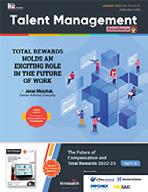
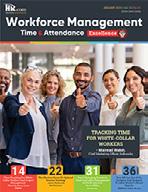

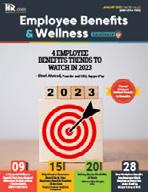
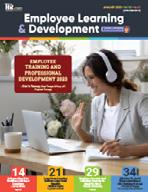
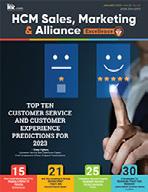

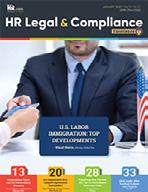
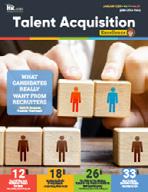



Like to submit an article? Use our online submission form or for more information go to www.hr.com/ExcellencePublications Publications 13 Targeted Publications to Reach Your Audience Informing, Educating, Enlightening and Assisting HR professionals in their personal and professional development, the Excellence series offers high-quality content through the publications!



























 Dave Ulrich
Rensis Likert Professor, Ross School of Business, University of Michigan Partner, The RBL Group
Julie Winkle Giulioni Author, Virtual /Live Keynote Presenter, Inc.’s Top 100 Leadership Speakers
Dr. Beverly Kaye CEO, BevKaye&Co.
Dave Ulrich
Rensis Likert Professor, Ross School of Business, University of Michigan Partner, The RBL Group
Julie Winkle Giulioni Author, Virtual /Live Keynote Presenter, Inc.’s Top 100 Leadership Speakers
Dr. Beverly Kaye CEO, BevKaye&Co.



































